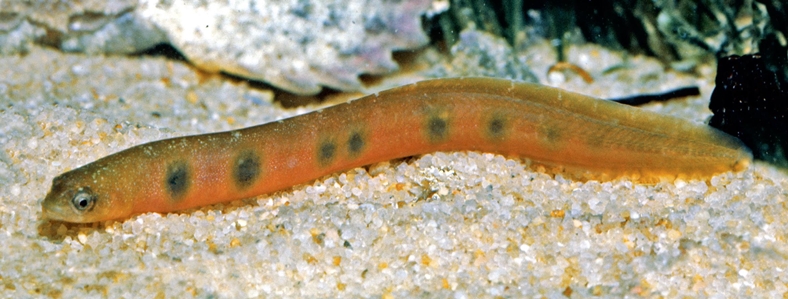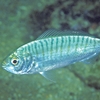General Description
Body long, slender, eel-like, with long-based dorsal and anal-fins united with the tail; pelvic fins reduced to a tiny sucking disc on the underside behind the gill slit; pectoral fins absent; head short with a single sensory pore above and behind the eye; mouth small, just reaching to below front of eye. Plain or mottled greenish to brownish, often with large blackish spots or blotches along midsides. To 12 cm.
Biology
Rarely seen, although common and abundant in shallow inshore waters including rock-pools, among algae, rocky rubble and shells.
Habitat
Inshore temperate waters including rock-pools, in depths of 0-30 m.
Reefs
Coastal shores
Distribution guide
South-eastern Australia.
Species Group
Fishes › Clingfishes and shore-eels
Depth
Shore (0-1 m)
Shallow (1-30 m)
Deep ( > 30 m)
Water Column
Max Size
12 cm
Commercial Species
No
Global Dispersal
Native to Australia
Identify
Conservation Status
- DSE Advisory List : Not listed
- EPBC Act 1999 : Not listed
- IUCN Red List : Not listed






